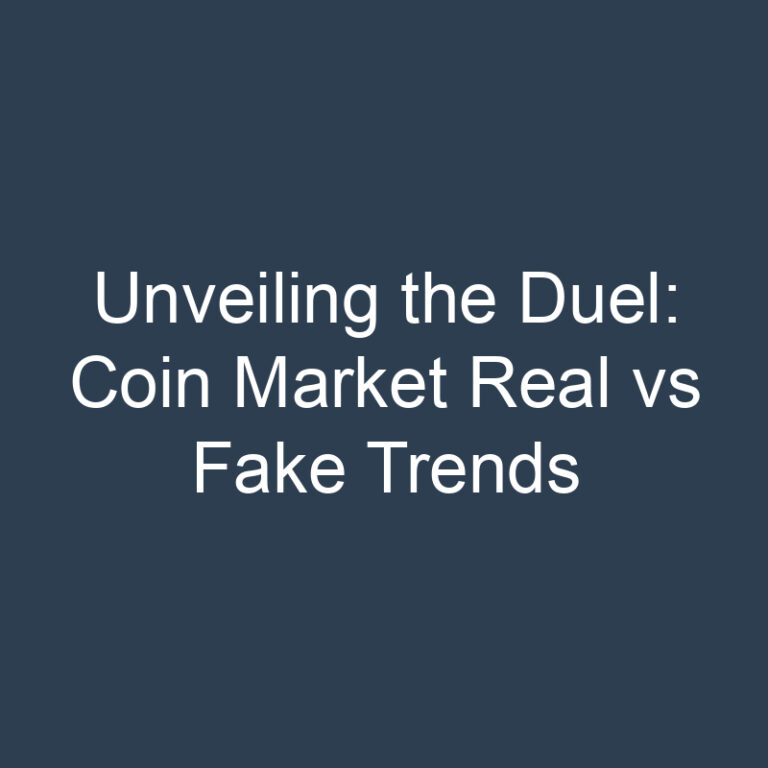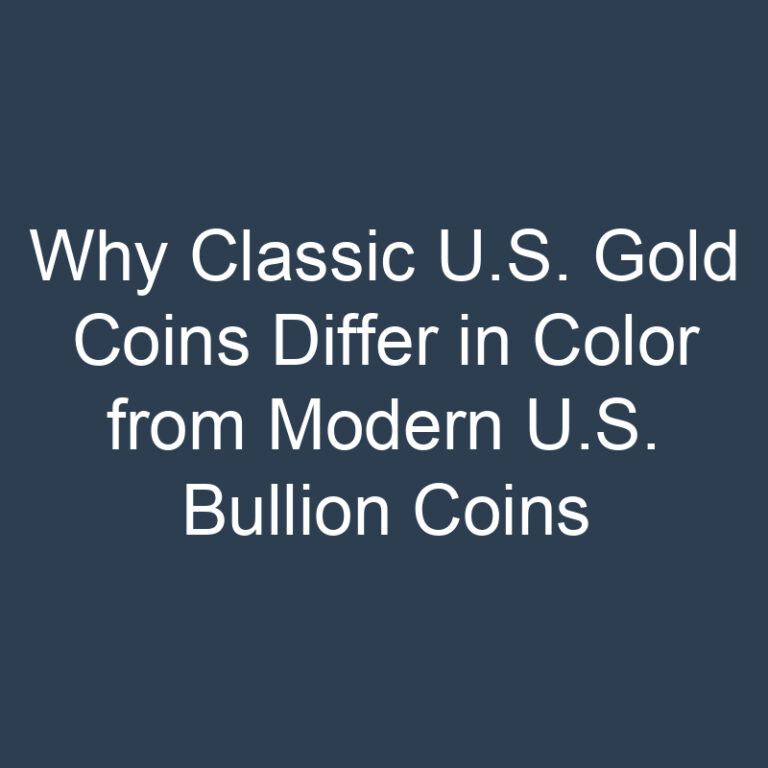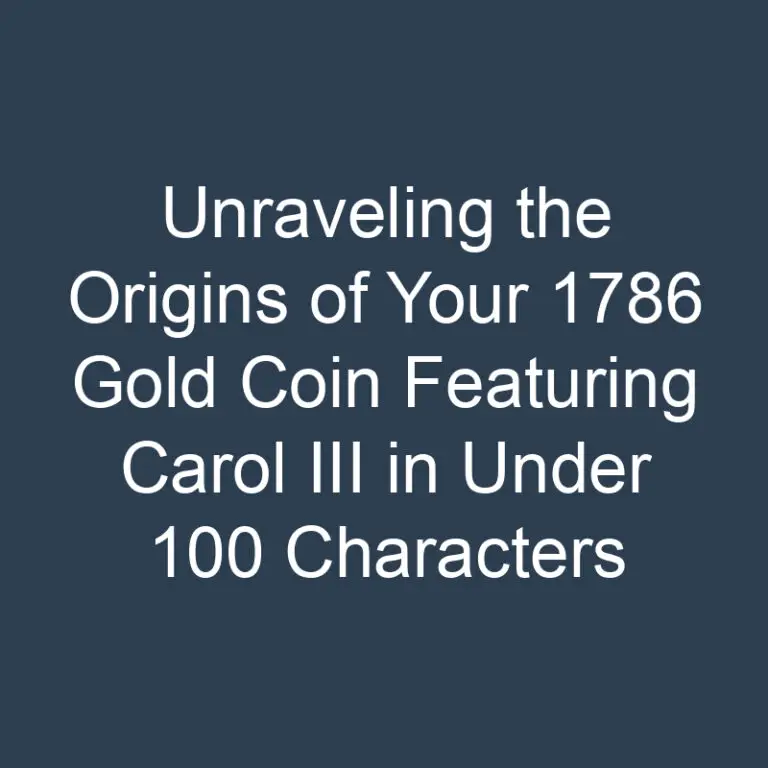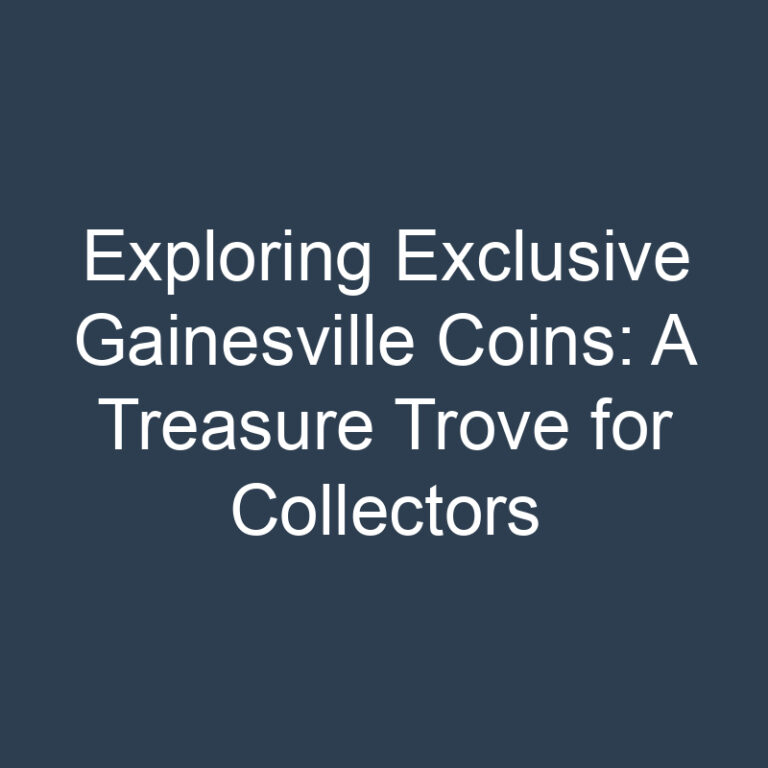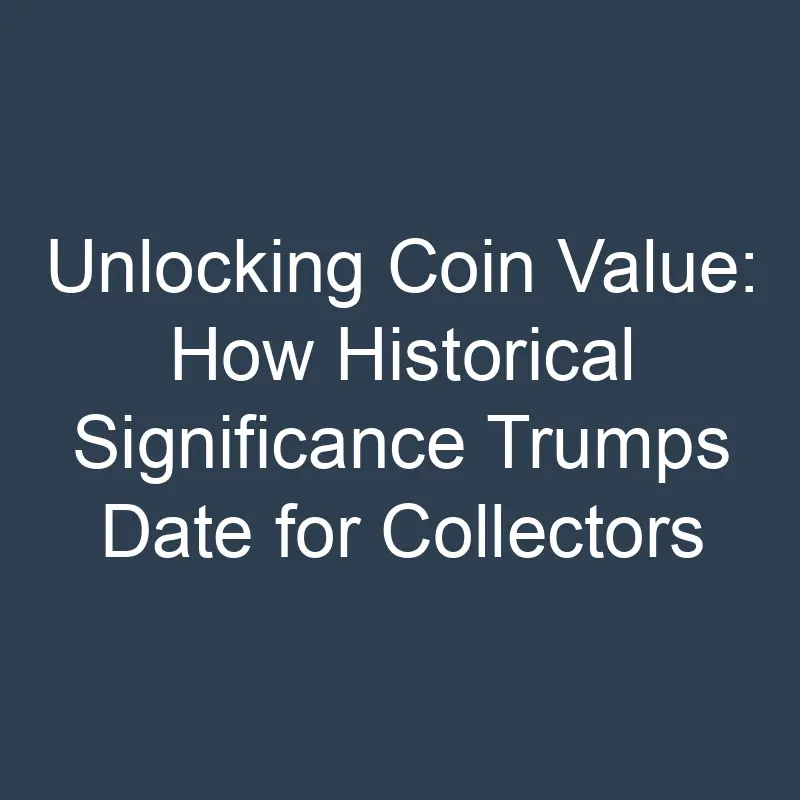
When it comes to collecting coins, one of the common misconceptions is that the date of a coin solely determines its market value. However, there are various factors at play that influence the worth of a coin in the numismatic world. We’ll delve into these factors to uncover the true determinants of a coin’s market value.
While the date of a coin is undeniably important, other elements such as rarity, condition, and historical significance also play a significant role in determining its market value. By understanding these factors and how they interplay, we can gain a deeper insight into the complexities of coin collecting and valuation. Join us as we explore the multifaceted world of numismatics and unravel the mysteries behind coin market values.
The Significance of a Coin’s Date
When it comes to determining a coin’s market value, many people assume that the date inscribed on it is the sole factor. However, while the date plays a crucial role, it is not the only aspect to consider when assessing a coin’s worth.
The date of a coin provides valuable information regarding when it was minted, which can be significant in determining its rarity. Coins produced in a specific year may have lower mintages, making them scarcer and therefore more desirable to collectors.
Furthermore, the historical context surrounding a coin’s date can also impact its market value. Coins minted during significant historical events or featuring unique designs can fetch higher prices due to their historical significance.
In addition to the date itself, collectors and dealers also consider the condition of the coin. Even if a coin is from a sought-after year, if it is heavily worn or damaged, its market value may not be as high as a well-preserved coin from a less notable year.
Understanding the interplay between the date, rarity, historical significance, and condition of a coin is essential in accurately assessing its market value. By looking at the bigger picture and considering all these factors, collectors can make informed decisions when buying, selling, or trading coins.
Factors Influencing a Coin’s Market Value
When evaluating a coin’s market value, it’s essential to go beyond just the date stamped on it. Several key factors come into play, shaping the worth of a coin in the numismatic world. Let’s delve into the primary elements influencing a coin’s market value:
- Rarity: The scarcity of a coin significantly impacts its value. The fewer coins of a particular type are in circulation, the higher the demand and value they command.
- Historical Significance: Coins tied to pivotal historical events or featuring unique designs often hold special value. The story behind a coin can elevate its desirability among collectors.
- Condition: The state of preservation of a coin plays a critical role in determining its market value. Coins in better condition generally fetch higher prices due to their aesthetic appeal and rarity in such quality.
- Metal Content: The type of metal a coin is made of can also influence its value. Precious metals like gold and silver inherently have higher material worth, potentially increasing the coin’s market value.
- Minting Errors: Coins with mistakes made during the minting process can be highly sought after by collectors. These errors add a layer of uniqueness and rarity, enhancing the coin’s market value.
Considering these factors collectively provides a more holistic view when assessing a coin’s market worth. By understanding the interplay of rarity, historical context, condition, metal content, and potential minting errors, collectors can make informed decisions and navigate the dynamic landscape of numismatics successfully.
Beyond the Date: Rarity as a Key Element
When it comes to determining the market value of a coin, rarity is a crucial factor that goes beyond just the date stamped on it. Rare coins are highly sought after by collectors, leading to an increase in demand and subsequently driving up their market value.
Here are some key points to consider regarding the impact of rarity on a coin’s worth:
- Low mintage: Coins that were minted in limited quantities are considered rare, as there are fewer specimens available in the market. This scarcity adds to their desirability among collectors, ultimately influencing their market value.
- Surviving population: The number of coins that have survived over the years also contributes to their rarity. Factors such as circulation, storage conditions, and historical events can impact the survival rate of a specific coin, further enhancing its scarcity and value.
- Collectible interest: Popular demand among collectors plays a significant role in determining a coin’s rarity. Coins that align with current collecting trends or have unique historical significance are often more sought after, driving up their market value.
By understanding the significance of rarity in the realm of numismatics, collectors can make informed decisions when assessing the value of their coin collections.
The Impact of Coin Condition on Market Value
When evaluating a coin’s market value, coin condition plays a pivotal role alongside factors like rarity. The condition of a coin refers to its state of preservation, which can greatly influence its desirability among collectors. Even a rare coin may lose significant value if it’s in poor condition, as collectors typically seek well-preserved pieces to add to their collections.
Grading services play a key role in determining and standardizing coin condition assessment. Professional grading provides a consistent and reliable way to evaluate a coin’s condition, making it easier for collectors to understand its market value. The higher the grade assigned to a coin, the greater its market value tends to be.
Factors such as wear and tear, scratches, cleaning marks, and toning all contribute to determining a coin’s condition. Uncirculated coins, those that have never been used in commerce and show no signs of wear, generally command higher prices due to their superior condition.
Proper storage is also crucial in maintaining a coin’s condition. Storing coins in protective holders or albums can help prevent damage and preserve their state of preservation over time. This level of care can have a significant impact on their market value in the long run.
In the world of numismatics, understanding how coin condition influences market value can be empowering for collectors. By paying attention to the state of preservation of their coins and taking steps to ensure their continued protection, collectors can maximize the value of their collections in the vibrant marketplace of rare and valuable coins.
Historical Significance in Coin Valuation
When assessing the market value of a coin, historical significance plays a crucial role. Coins that have a historical context or were minted during significant events often hold greater value due to their collectibility. The historical background of a coin can add depth to its story and make it more desirable to collectors.
Key points to consider regarding historical significance in coin valuation:
- Mintage Year: Coins minted in important years may have higher value.
- Commemorative Coins: Issued to honor historical events or figures, these coins are sought after by collectors.
- Rare Varieties: Coins with unique historical significance due to variations or errors can fetch premium prices.
By understanding the historical context of a coin and its significance in the broader scope of numismatics, collectors can make informed decisions when assessing its market value.
Key Takeaways
- The date of a coin is important, but factors like rarity, historical significance, and condition also influence its market value.
- Rarity greatly impacts a coin’s value; low mintage, surviving population, and collectible interest contribute to rarity.
- Coin condition is crucial in determining market value; grading, wear, storage, and preservation all play a significant role.
- Historical significance adds value to coins; mintage year, commemorative coins, and rare varieties hold special allure for collectors.
Conclusion
Understanding the historical context of a coin is crucial in determining its market value. Factors such as mintage year, commemorative significance, and rare varieties all play a role in a coin’s desirability among collectors. By delving into the history behind a coin, we gain valuable insights that help us make informed decisions in the numismatic market. Historical significance adds a layer of depth and intrigue to a coin, making it more appealing to collectors seeking unique pieces for their collections. In the world of numismatics, the date of a coin is not just a number; it is a gateway to a rich historical narrative that enhances its market value.

